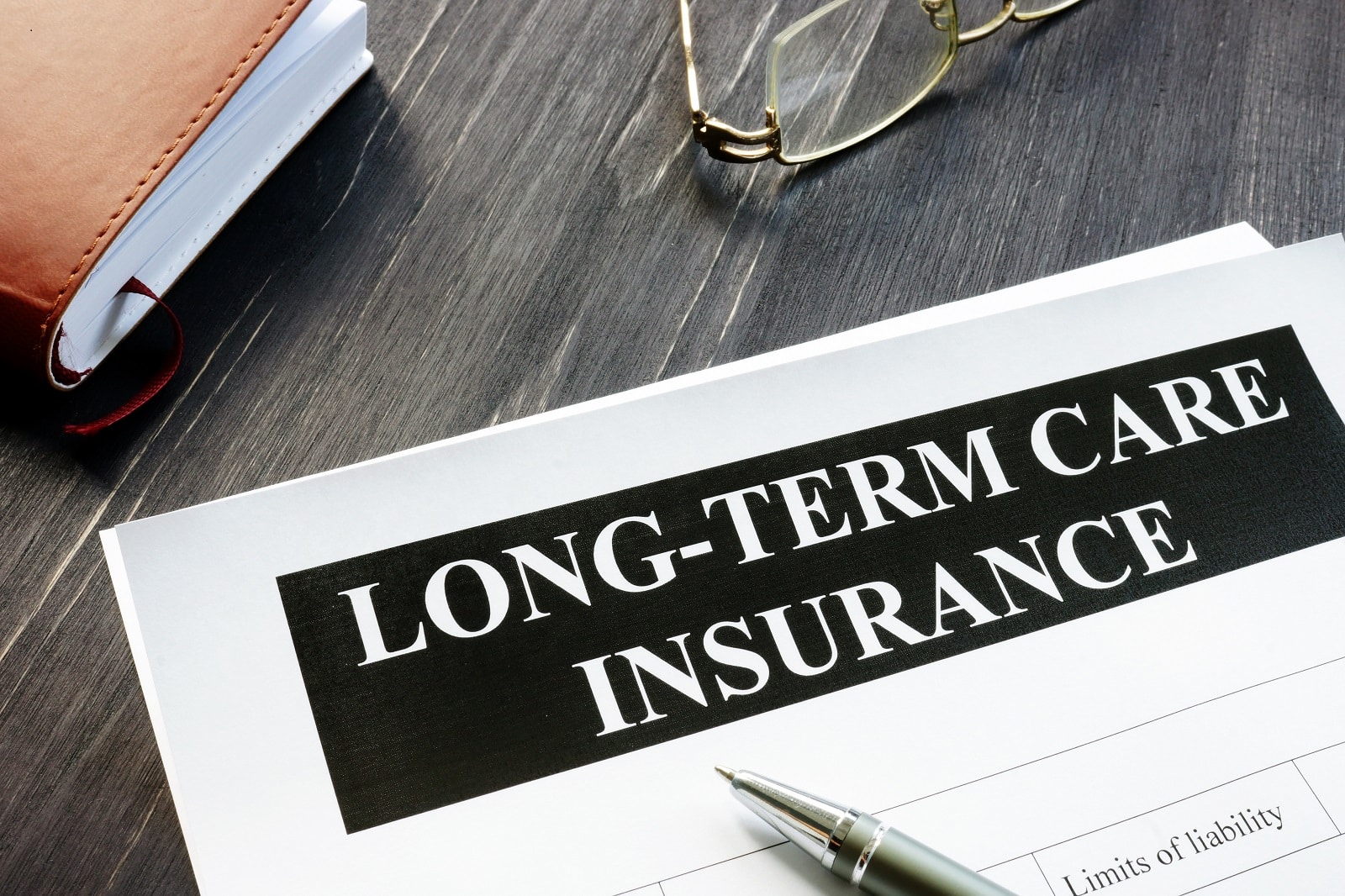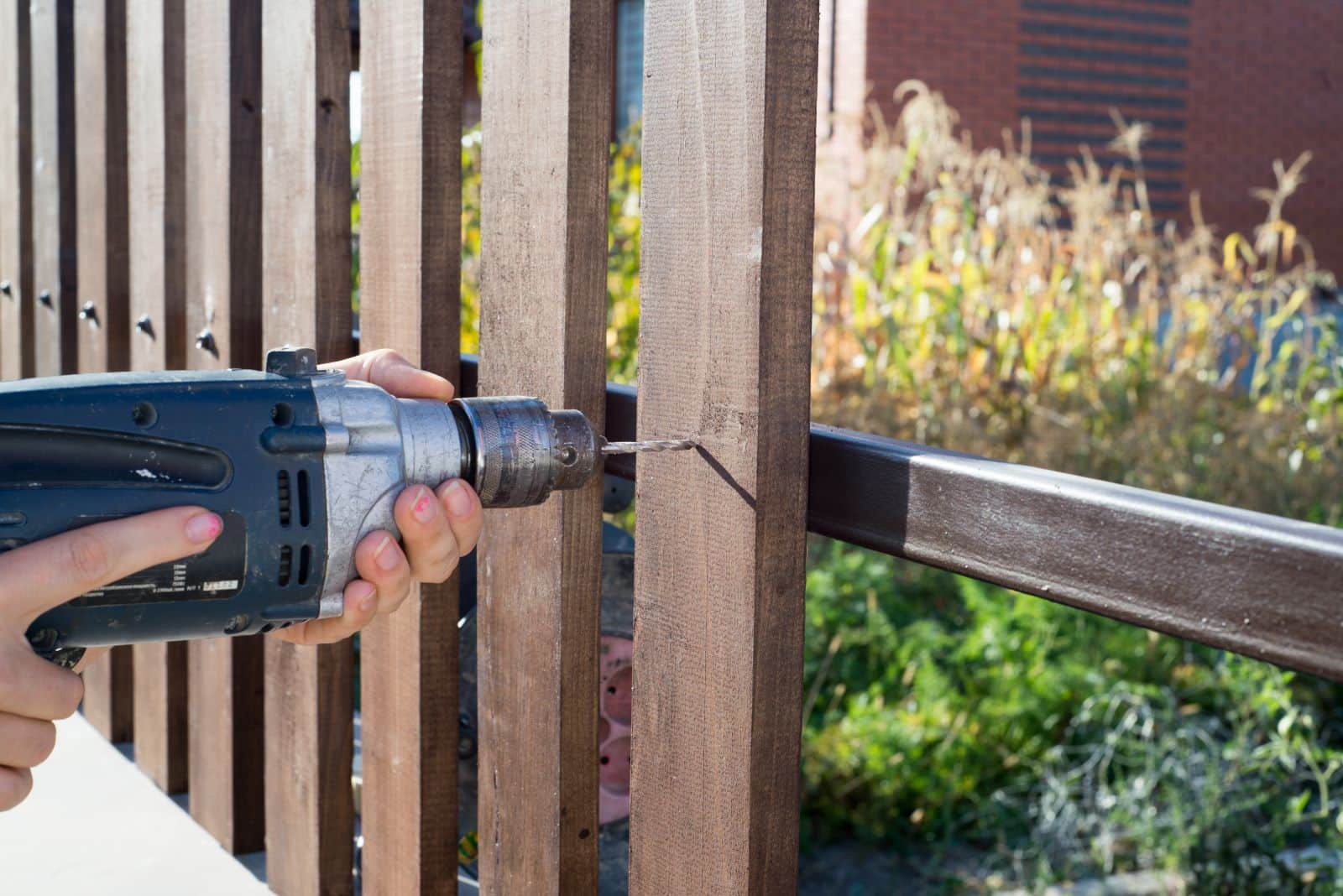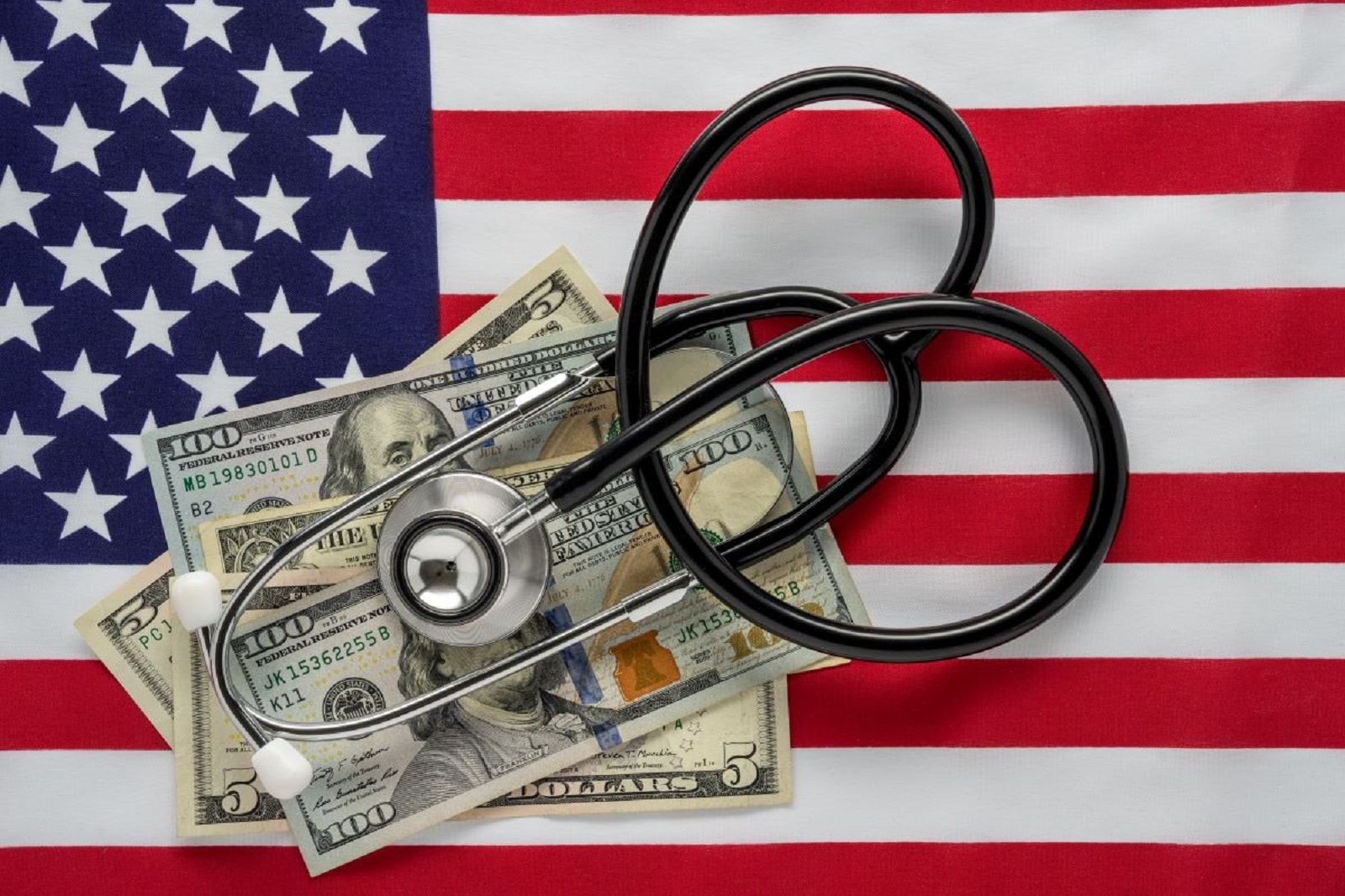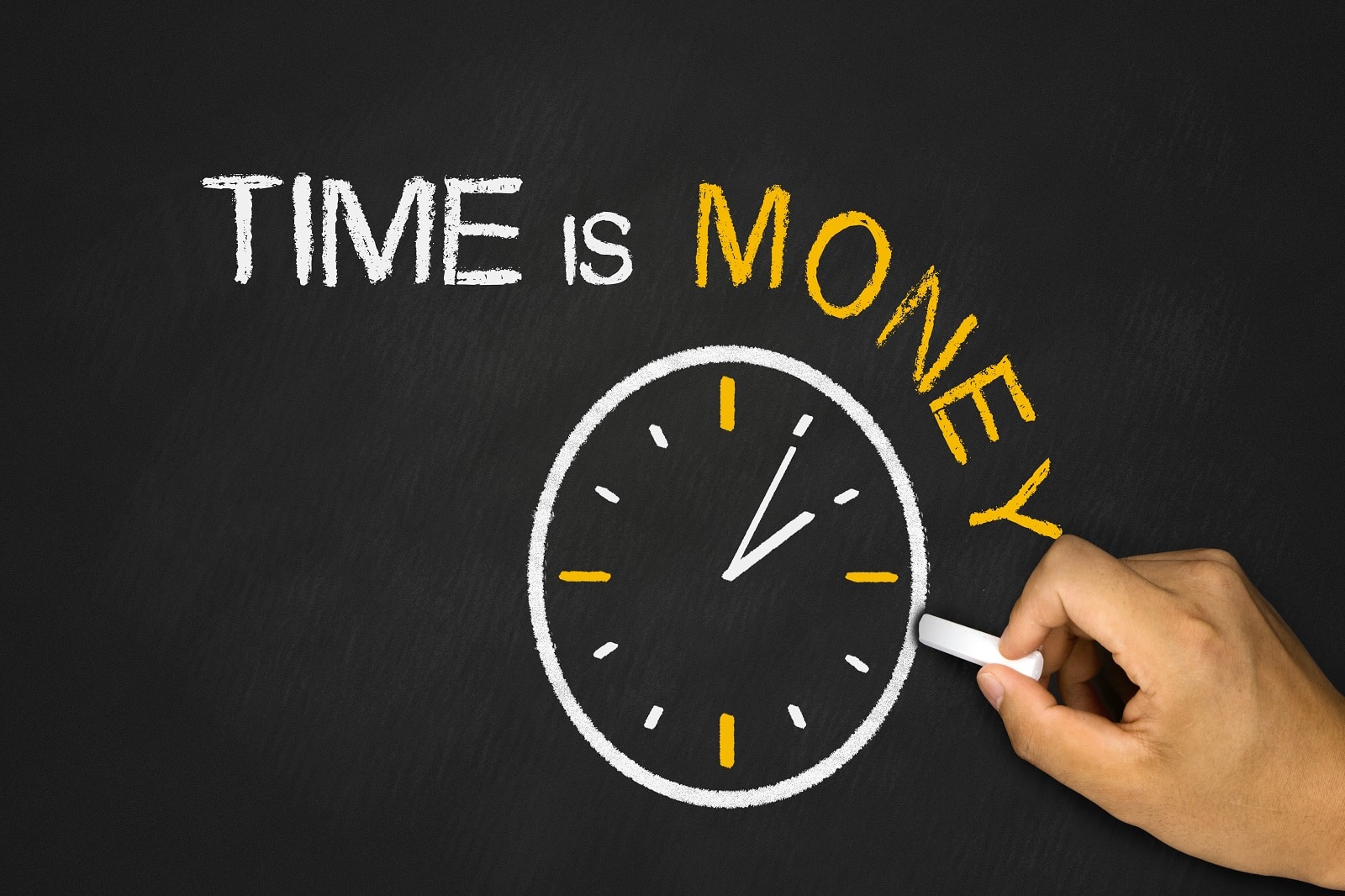
by Mark Garro | Your Money
Older generations have long criticized millennials and Gen Z for not investing in real estate. But with the recent housing market crash, the tables have turned. Here are 15 reasons why younger generations can be grateful they were kept off the property ladder.
#1. Flexibility

Image Credit: Shutterstock / New Africa
Renting allows easy relocation, perfect for those who love to explore and value experiences.
#2. No Maintenance Woes

Image Credit: Shutterstock / tache
No need to stress over repairs or unexpected home issues. That’s on the landlord.
#3. Financial Fluidity

Image Credit: Shutterstock / Pixel-Shot
Renters often have more available cash, allowing them to diversify investments or chase dreams.
#4. Avoided Negative Equity

Image Credit: Shutterstock / alisafarov
Many homeowners are now stuck with homes worth less than their mortgages. Renters don’t face this issue.
#5. Freedom From Debt

Image Credit: Shutterstock / Ground Picture
Many younger folks are already saddled with student loans. No mortgage means one less massive debt.
#6. Adaptive Living

Image Credit: Shutterstock / Rachata Teyparsit
Life changes? Renters can more swiftly adjust their living situations accordingly.
#7. Economic Resilience

Image Credit: Shutterstock / baranq
In economic downturns, renters can easily adjust by moving to more affordable spaces or thriving job markets.
#8. Better Mental Health

Image Credit: Shutterstock / Look Studio
The emotional toll of foreclosure is immense. Renters bypass this mental burden.
#9. Living in the Now

Image Credit: Shutterstock / Look Studio
Renting encourages a present-focused lifestyle without worrying about long-term property values.
#10. Community Access

Image Credit: Shutterstock / DavideAngelini
Renters often live in lively urban areas rich in amenities and cultural experiences.
#11. Avoiding the Blame Game

Image Credit: Shutterstock / Krakenimages.com
No buyer’s remorse or guilt over poor investment choices in a crashing market.
#12. Diverse Experiences

Image Credit: Shutterstock / ASTA Concept
Renting can mean living in various places over time, offering a wealth of experiences.
#13. Staying Current

Image Credit: Shutterstock / Followtheflow
Renters can easily update their living spaces, staying in touch with the latest lifestyle trends.
#14. Environmentally Conscious

Image Credit: Shutterstock / evrymmnt
Renting, especially in shared buildings, may result in a smaller carbon footprint.
#15. Delayed Gratification

Image Credit: Shutterstock / Andy Dean Photography
With the market’s shift, those who waited might now buy homes at much more favorable prices.
The Bottom Line

Image Credit: Shutterstock / Hrendon
While homeownership has its merits, there’s no universal path to success. The housing crash underscores the unpredictable nature of investments.
For now, the younger generations can enjoy the benefits of flexibility and freedom away from the pressures of a mortgage.
The post Real Estate Tips Gen X Doesn’t Take from Boomers first appeared on Thrifty Guardian.
Featured Image Credit: Shutterstock / fizkes.
The content of this article is for informational purposes only and does not constitute or replace professional financial advice.

by Mark Garro | Thrifty Tips
In an economic environment where every penny counts, missteps in saving strategies can lead to financial setbacks rather than gains.
Wide Spectrum of Saving Strategies

Image Credit: Shutterstock / Monster Ztudio
The quest to save money encompasses a wide spectrum of decisions, from everyday purchases to major financial commitments. While the intent is to safeguard finances, the approach to saving can sometimes be a double-edged sword.
It’s crucial to understand the complexities and potential pitfalls across various areas to ensure that efforts to economize don’t inadvertently lead to greater expenses.
Misconceptions in Car Ownership

Image Credit: Shutterstock / peterschreiber.media
Owning an old car may seem cost-effective. However, a new car will generally not have the unexpected repairs and maintenance costs of an older car.
Consequently, the allure of no car payments is often overshadowed by the unpredictability and potential expense of maintaining an older vehicle.
Bulk Buying Pitfalls

Image Credit: Shutterstock / alphaspirit.it
Bulk purchases can seem like a smart way to save, but this isn’t always the case.
Shoppers may find that buying in large quantities can lead to unnecessary expenses and wasted resources. It is wise to be cautious of overstocking items, which might lead to financial strain and food waste.
Insurance Shortcuts Can Backfire

Image Credit: Shutterstock / Vitalii Vodolazskyi
Underinsured individuals risk financial ruin in the event of unforeseen circumstances. Brian K. Seymour, CEO of Prosperitage Wealth, emphasizes the importance of adequate coverage.
“Maintaining only the state-mandated coverage can leave you personally responsible for any damages that exceed your policy limits,” he explains, advocating for comprehensive policies.
The Cost of Selling Low-Value Items

Image Credit: Shutterstock / Andrey_Popov
There can be huge inefficiencies in selling low-value items. The effort often exceeds the financial return, suggesting that donating such items and focusing on high-value sales, like luxury goods, can be more beneficial.
DIY Home Repairs: A Risky Gamble

Image Credit: Shutterstock / Stokkete
DIY home repairs can escalate costs, especially when things go wrong. Josh Rudin of ASAP Restoration LLC warns about the dangers of amateur repairs leading to more significant issues.
He recommends hiring professionals and regularly maintaining your home to avoid costly surprises.
Dental Neglect: A Pricey Oversight

Image Credit: Shutterstock / Motortion Films
Neglecting dental health can lead to expensive treatments down the line. Michael Kosdon, DDS, advises regular checkups to avoid costly procedures.
“A checkup and cleaning is not expensive, so it’s not worth it to wait until you’re in a better financial position,” he states, highlighting the cost-effectiveness of preventative care.
The False Economy of Cheap Purchases

Image Credit: Shutterstock / goodluz
Investing in quality can save money in the long run. Cheap items often have a short lifespan, leading to frequent replacements and, ultimately, higher costs.
Similarly, underutilized services, like gym memberships, are a waste if they don’t meet your needs.
Evaluating the True Cost of Savings

Image Credit: Shutterstock / Stokkete
Before embarking on any cost-cutting measures, it’s important to assess their long-term impact.
Often, what seems like a saving in the short term can lead to higher expenses down the road.
The Dangers of Overextending on Credit

Image Credit: Shutterstock / Stokkete
When bulk buying or undertaking expensive projects, the temptation to use credit can lead to debt accumulation.
Understanding the true cost of credit card interest and finance charges is essential to avoid falling into a debt trap.
Maximizing the Value of Investments

Image Credit: Shutterstock / wutzkohphoto
Whether it’s a car, home repairs, or health services, investing in quality can lead to long-term savings.
This approach minimizes the need for frequent replacements or repairs, ultimately saving money.
The Hidden Costs of DIY

Image Credit: Shutterstock / Serhii Krot
While DIY projects can be tempting, they often end up being more expensive due to a lack of expertise and proper tools.
Professional services, although initially more costly, can prevent expensive mistakes and ensure quality results.
Making Smart Choices in Healthcare

Image Credit: Shutterstock / Rosemarie Mosteller
Regular health and dental care are not just about maintaining well-being; they’re also about avoiding expensive treatments in the future.
Investing in preventive care is a cost-effective strategy.
The True Value of Time

Image Credit: Shutterstock / bleakstar
Time is a precious resource, and its value should be considered in any money-saving endeavor.
Naghibi’s advice to focus on high-value activities over time-consuming, low-return tasks is a reminder of the importance of efficient time management.
A Balanced Approach

Image Credit: Shutterstock / Sutthiphong Chandaeng
Effective money-saving strategies require a balanced approach, considering both immediate and long-term impacts.
By making informed decisions, consumers can avoid the pitfalls of misguided saving tactics and ensure their efforts lead to real financial benefits.
The post How to Dodge Costly Money-Saving Mistakes first appeared on Thrifty Guardian.
Featured Image Credit: Shutterstock / Tijana Simic.
The content of this article is for informational purposes only and does not constitute or replace professional financial advice.

by Mark Garro | Thrifty Tips
How much do you have in your emergency fund? $100? $500? Or are you reading this thinking “Emergency fund? Yeah right!” Finding ways to create a savings account shouldn’t be overwhelming. I’ve got some tips and tricks to putting a little bit of cash aside so you can begin developing the emergency savings you need.
Disclosures: The links in this post may contain affiliate links through which I can receive a small commission at no additional cost to you if you make a purchase after clicking on my link.
Emergency Fund Help
First let’s start with what exactly an emergency savings is. An emergency savings is just how it sounds – funds that have been set aside to be used only in the event of an emergency. These emergencies can range everywhere from losing your job, crashing your car, or an unexpected illness that leaves you with outrageous medical bills.
It is impossible to be ready for any emergency that comes your way, but one of the best things you can do for yourself and your credit is to create an emergency fund to bail you out of any unforgiving financial situations.
If you’ve seen how I create a budget, you know that we don’t have a lot of wiggle room. Between daycare costs, student loans, mortgage – it’s hard not to live paycheck to paycheck!
When we bought our house in 2014, we obliterated our savings and then some. Despite a thorough inspection and a supposed HUD-regulated appraisal, we ran into a few issues shortly after moving in and had to pay for repairs with a credit card. A year later and $276 in interest later, I’m happy(ish) to say we’ve paid that off and no longer hold any credit card debt. If we’d had an emergency fund, though, we could have used that $276 as an additional payment on our mortgage or car loan, thereby saving us not just the $276, but whatever interest was charged on that payment that was never made.
Why a Credit Card is NOT a Savings
A credit card can be great if you use it properly. Because we do so much of our household shopping through Amazon Prime, we have an Amazon.com Rewards VISA. It’s great because we earn 3% on anything bought through Amazon plus 1-2% on everything else. We even got a $50 gift card when we signed up! The trick is making sure that we only use it on things we already have the cash for. This way we can immediately pay it off once the bill comes but we still earn cash back that we can put towards future purchases. I love going to check out on Amazon and spending next to nothing because of how quickly the rewards stack up!
Avoiding Debt
Notice, though, that I said we only use our credit card when we already have the cash to pay it off. Whether you have the cash tucked away in the bank or you have the freedom to pull it out of a paycheck, the only time a credit card is a reliable option is if you absolutely have a way to pay it off. It is not an option as an emergency fund.If you use your credit card as a way to get yourself out of an emergency, how will you pay it when that bill comes due? For particularly expensive emergencies, that bill could sit on the credit card for months, or even years, before it is paid off and then you’re looking at hundreds, if not thousands, of dollars in interest!
The interest on credit cards can be high, and as you continue to go months and months without being able to pay your debt off, the interest will only continue to grow. If you can’t afford the emergency in the first place, you definitely can’t afford to pay more in interest than you expected. Continuously avoiding paying down credit card debt will also negatively impact your credit. If your credit score gets too low, you will have a difficult time should you need a car loan, money for college, or you want to buy a house. Emergencies are unavoidable, but you don’t want to make one worse by giving it the power to ruin the rest of your life financially.
Why Having an Emergency Fund is a Must
If you’re already living thrifty, you may think you don’t have enough cash to set aside for an emergency fund. I know, I’ve been there. When you’ve created your budget and you’ve got every penny accounted for, it’s easy to say “I KNOW I can’t afford to save…” but truthfully, you can’t afford not to.
It’s frustrating, I know. You know your finances and they already feel stretched to their limits. You may want to click away now, angry that I should so presumptuous as to say you have to start an emergency fund. But, please, stick with me for just another minute.
It adds up
Any money you can save, even if it’s just $5 a week for now, will add up eventually. Hopefully you won’t experience any emergencies any time soon, but even if you do, any actual money you have will help make a difference in what you have to put on credit.
Let’s say you have a credit card that sits at a 27% interest rate and you experience a medical emergency that costs you $2,500. With a $100 now owed each month (and that’s $100 you already said you don’t have but are now required to find), that bill will take you over three years to pay off and end up actually costing you $3,800.
If, however, you had even just $750 in savings, that same bill (while still costly) will only cost you $2,300 to be paid off in 23 months. So that $750 in savings is actually saving you more than TWICE that in the long run.
A general rule of thumb on how much to have in savings in around 6 months of living expenses; for us, that would be $19,000. I see that number and I immediately want to laugh and cry at the same time. We are no where near that $19,000 mark. In fact, I see that and I’m right there with you – it seems IMPOSSIBLE!
But then I remind myself – it doesn’t need to happen overnight. I think back to what a difference having only $750 makes and then I can breathe again.
How to Grow Your Emergency Fund
Begin saving by making a small goal, maybe one month of mortgage and utility payments. Then take a good long honest look at your budget. What can you cut out or cut back? I bet you can cut your budget by at least 5%.
Here are just a few ideas on how to cut back:
- Your cellphone plan. We were paying $160/month for our two phones until we switched to Republic Wireless. Now our bill averages $38/month. Why? Because with Republic Wireless, you only pay for what you use. For example, if you pay 2GB per month ($30) but only use 1GB, you’ll see a $15 credit on your account the following month. I love it!
- Check out my post on how to eliminate kids clothes from your budget (don’t worry, they won’t go naked!)
- Get rid of cable. I’ll admit, this one was tough for me. Not because we watch a lot of TV but because the one show we do love to watch isn’t available on Hulu or Netflix until after the season is done. Guh. So many spoilers!! But we did it anyway and I’m glad because it saves us well over $600/year.
- Have a little one in diapers? There are many ways to slash costs on those, including switching to a generic brand. Check out my best tips on how to save money on diapers!
- See if your gas company has a flat rate budgeting plan. This way you know exactly what you’ll need to pay each month versus having more money in the summer and scrambling to find it in the winter.
- Declutter your home and put any extra income you earn into your savings account!
- Consolidate your student loans and secure a lower interest rate.
- If you have credit cards, call and ask them to lower your interest rate. They might refuse, but they might not. It never hurts to ask!
- Eat breakfast. Wait, what? Yep, I said eat breakfast. Start your day off right so you’re less likely to splurge on vending machine treats or fast food for dinner.
- Do a majority of your shopping online. Not only will you save on gas, but you can often buy in bulk and save on a lot of your groceries or household goods. For example, I never buy baggies in store. At Target, they’re $4.59 for 38 (or .12 cents each). On Amazon, I got 500 for $28.36 (or .05 cents each!)
Trim the Fat
Once you decide on ways to trim, you will slowly but most certainly reach the goal you have made for yourself. It is also important for you not to view the money you set aside as a typical savings account. Only take money from this particular bank account in the event of a true emergency, which doesn’t include a new cellphone or a new car.
Begin saving by making a small goal, maybe one month of rent or mortgage payments. Set aside as much of your paycheck as you think you can do without, even if it is only a few dollars. You can also spend a bit of time each week earning some extra cash and automatically put that aside for savings. As you continue to set aside little bits, you will slowly but surely reach the goal you have made for yourself.
For many people without much disposable income, developing an emergency fund seems like something completely out of reach. While restructuring your budget can seem overwhelming or stressful at first, it’ll be well worth it in the long run. Setting aside just a few dollars a week can get you on track to a decent emergency fund and keep you from making a bad emergency even worse!
The post Emergency Fund – How to Start from Nothing first appeared on Thrifty Guardian.
The content of this article is for informational purposes only and does not constitute or replace professional financial advice.

by Mark Garro | Thrifty Home & Family
Major American cities are experiencing a noticeable decrease in child populations, a situation further aggravated by the pandemic and soaring living costs.
Unraveling a Growing Trend
An ongoing trend suggests that the number of families with children in urban areas is dropping, a situation worsened by the rise of remote work during the COVID-19 pandemic.
The escalating costs associated with urban living, including skyrocketing housing prices, are significant factors pushing families away from metropolitan areas. While cities are expected to have a higher cost of living compared to rural areas, the extent of the current expenses is deemed excessive and a deterrent for families.
Increased crime rates and growing safety concerns have also contributed to families deciding to move away from cities.
Lastly, the shift towards remote work has lessened the need for families to reside in cities, providing them with a broader range of residential options. And as families accumulate wealth, they tend to seek out regions offering more living space, often leading them away from densely populated city centers.
Assessing Family-Friendly Cities
Manhattan Institute fellow Robert VerBruggen conducted extensive research that delves into the family-friendliness of 200 American cities, considering factors such as child poverty, educational achievement, and social mobility.
VerBruggen’s study indicates a noticeable concentration of families in the central parts of the country, while coastal regions exhibit “child-starved” characteristics. Many families face difficult choices, such as leaving a beloved city due to the prohibitive costs or unsuitable environments for raising children.
The Crucial Role of Education
Access to quality public schools is a significant consideration, with property values often reflecting school zoning, thereby influencing family residential choices.
The pandemic-induced closures of schools have exacerbated parents’ frustrations, intensifying feelings of helplessness regarding their children’s education.
The Need for Policy Reforms
Resistance to modifying zoning laws and the high cost of living are significant barriers that deter families from settling in cities. Additionally, the prevalent visibility and pervasiveness of crime in densely populated urban areas strongly influence people’s decisions to relocate.
Furthermore, the nationwide decline in fertility rates is a pressing concern that extends beyond urban areas, necessitating immediate attention. Implementing reforms aimed at improving living conditions for families in cities has the potential to address the broader issue of declining fertility rates across the entire nation.
Pondering a Future Without Children
The debate persists on whether cities can thrive without a steady influx of young families and what alternatives exist for Americans once they decide to start a family.
Addressing the challenges as a result of the decreasing number of children in major cities is of paramount importance to ensure a prosperous and sustainable future for America’s urban centers.
More From Thrifty Guardian
Thousands of Children of Illegal Immigrants May Be Deported: US Supreme Court Decides Fate of “Dreamers”
Ramaswamy Would End “Birthright Citizenship”: Believes Illegal Immigrants Should Be Deported as a Family Unit
The post Childless Cities: Soaring Costs, Safety Concerns, and the Urban Exodus first appeared on Thrifty Guardian.
Featured Image Credit: Shutterstock / ako photography

by Mark Garro | Better You
Navigating the convoluted American healthcare system is proving challenging for many patients. The complex processes from selecting insurance plans to deciphering medical bills is inadvertently causing patients to shoulder higher out-of-pocket costs.
A Crisis of Confusion
Patients are consistently finding themselves mired in confusion, as the complexities of insurance plans and medical billing procedures often lead to unintended and higher expenses.
The cost of healthcare in the U.S. is staggering. Routine procedures and out-of-pocket expenses are markedly higher compared to other nations, adding financial strain to the already complicated system.
Skipping Essential Care
Numerous studies indicate that the mere presence of a small financial barrier can discourage individuals from seeking necessary medical attention, leading to neglected health issues.
A comprehensive survey revealed about 7 in 10 Americans have been burdened with medical bills they couldn’t afford, prompting many to make significant lifestyle changes and sacrifices to accommodate healthcare costs.
A substantial number of Americans harbor serious misconceptions about how their healthcare and insurance benefits function, potentially exposing themselves to unwarranted financial stress.
Uncertainty Over Costs
A significant portion of people frequently find themselves unsure about the costs of their medical services and the extent of coverage provided by their insurance plans, leading to unwelcome surprises.
While more than half of Americans expressed uncertainty regarding whether they are consulting with in-network healthcare providers. Such confusion can result in higher out-of-pocket costs if treated by out-of-network practitioners.
The Challenge of Big Bills
Many patients are often at a loss when faced with large, unaffordable medical invoices, unsure of the steps needed to address these financial burdens.
Only about 3 in 10 Americans have taken steps to contest a medical bill. The survey brought to light the stark disparities among different demographic groups in terms of actively working to reduce their healthcare bills.
Despite the high success rate in reducing costs by contesting bills, a substantial number of individuals don’t pursue this avenue due to a lack of awareness, confusion, or feeling overwhelmed by the process.
Unaware of Assistance
Alarmingly, nearly half of the survey respondents were unaware of financial aid programs run by hospitals or physician practices designed to help patients cover their medical bills.
Various studies consistently confirm that patients frequently find themselves overwhelmed by the healthcare system’s complexity, leading to uninformed and costly decisions.
Problems With Insurance
Approximately 6 in 10 Americans have encountered problems when using health insurance in the past year, leading to denied care, deterioration in health, and unforeseen costs.
The convoluted nature of the U.S. health system acts as a silent adversary, obstructing access and making affordability a distant dream for many patients.
Confusion Begins at Enrollment
The confusion often starts at the enrollment stage, where individuals, faced with an array of insurance options, feel uncertain about their choices.
Legislative measures, such as the No Surprises Act, aim to bring clarity and reduce patient confusion, but inconsistencies in enforcement pose challenges.
The Impact on Health
The persistent confusion in navigating the healthcare system leads to difficulties in accessing services and affording treatment, ultimately taking a toll on the overall health and well-being of Americans.
With the healthcare system unnecessarily leading to costly confusion and restricted access to essential care, the need to simplify processes and provide clarity for Americans is becoming more and more critical.
More From Thrifty Guardian
Thousands of Children of Illegal Immigrants May Be Deported: US Supreme Court Decides Fate of “Dreamers”
Ramaswamy Would End “Birthright Citizenship”: Believes Illegal Immigrants Should Be Deported as a Family Unit
The post The Costly Chaos of American Healthcare: Patients Struggle to Navigate a Complex System first appeared on Thrifty Guardian.
Featured Image Credit: Shutterstock / PeopleImages.com – Yuri A




































